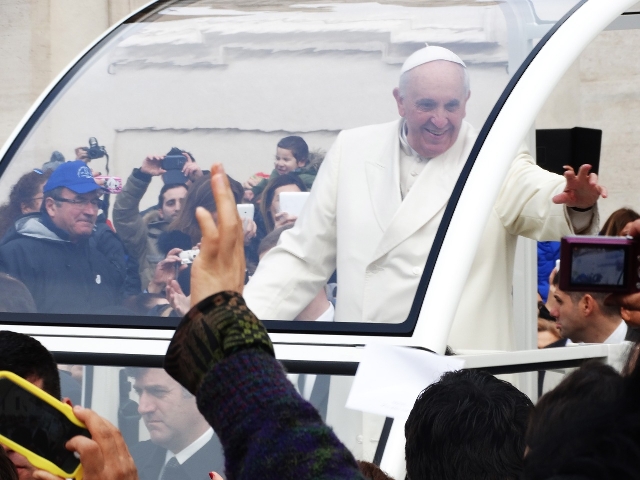Pope Francis’ U.S. visit might be the first of its kind — here’s why

Catholic archbishops expect the pope “to address issues that have become themes of his two-and-a-half-year papacy, such as poverty, the environment and the family” during his six-day visit to Washington, D.C., Philadelphia and New York from Sept. 22 to 27, according to The Huffington Post.
However, to predict exactly what people can expect from the pope’s first U.S. trip proves difficult because of Francis’ spontaneity, Archbishop of Suacia Bernadito Auzo told The Huffington Post.
“[Auzo] laughed when explaining his reluctance to grant requests for tours and photos of the intended papal residence in New York, given that Francis is known for being spontaneous and not always following his official schedule,” The Huffington Post’s article indicated. “Auza’s comments reflected an overarching theme of the bishops’ predictions — that just because something is on the pope’s schedule does not mean it will happen as scripted.”
In whatever way the script plays out, though, Jerry Carino of Asbury Park Press said it will be a blockbuster.
If past pope visits and Francis’ popularity indicate anything, the visit “will foster the enthusiasm of a Super Bowl, the intrigue of a presidential election and the reverence of Christmas morning,” Carino wrote.
But basing expectations for Francis’ trip on popes of the past might be misguided, Rachel Zoll wrote for The Associated Press: He’s never been to the U.S., never networked “within the deeply influential and well-resourced U.S. church” and might look at America in a unique way because of his South American heritage.
Zoll wrote one of Francis’ key advisers disregarded perceptions Francis dislikes the U.S., a take fueled by the pope’s view on the global economic system.
“I don’t think the pope has anything against America,” Bishop Marcelo Sanchez Sorondo, a Francis adviser, said in an interview in Rome. “What the pope might have is that he felt the repercussions of America in Latin America.”
Zoll noted Francis’ predecessors — Popes John Paul II and Benedict XVI — lived through World War II in Europe “when Americans were considered liberators and generous benefactors who rebuilt the war-ravaged continent.”
Francis, however, is shaped by another history, one partially developed by often tense relations between the U.S. and South America, according to The Associated Press. Because of all this, Francis’ visit includes some unpredictability.
Still, followers can expect a rock-star reception, along a focus on family, discussion of poverty and crowd interaction, according to Asbury Park Press.
The last one might carry more intrigue than most would guess, according to Carino’s article.
“Pope Francis likes people, and he likes to go off script,” Carino wrote. “To that end, he has shown a penchant for spontaneous gestures, like stepping out of the popemobile to embrace crowd members. He’ll indulge requests to pose in selfies.”
Nicola Menzie of Christian Post reported on another element when Francis meets with families of 9/11 victims Sept. 25 and attends a service at Ground Zero: emotion.
The event’s backdrop is the slurry wall, a portion of the World Trade Center’s foundation. The wall stood during the attack and adds a bit of symbolism during Francis’ first U.S. visit, Menzie wrote.
“That backdrop, while representatives of all of these religions and faiths are gathered there, it’s just a hugely symbolic setting,” Helen Osman, secretary of communications for the U.S. Conference of Catholic Bishops, told Christian Post. “So I think that will be an extremely important event for the world.”












